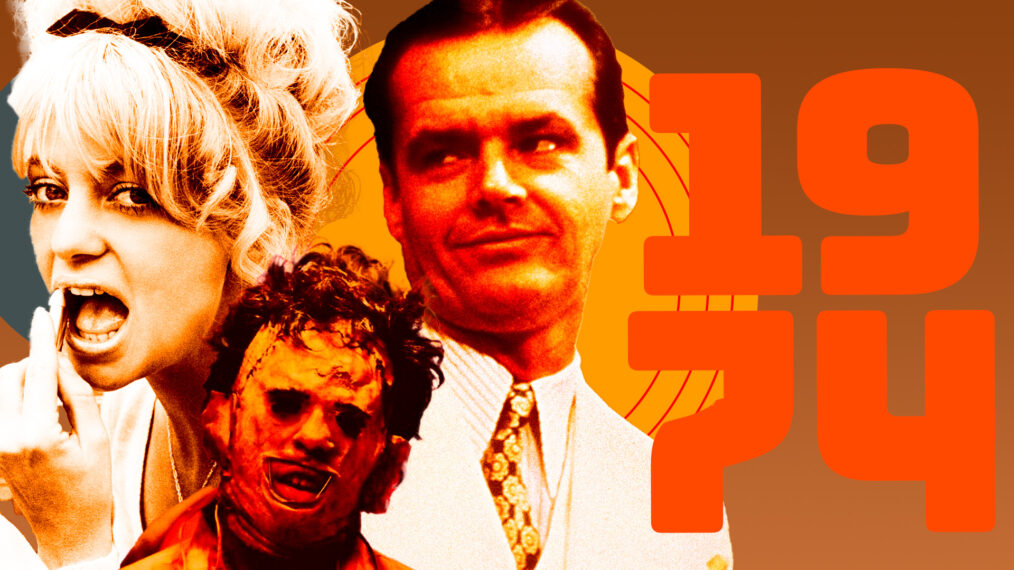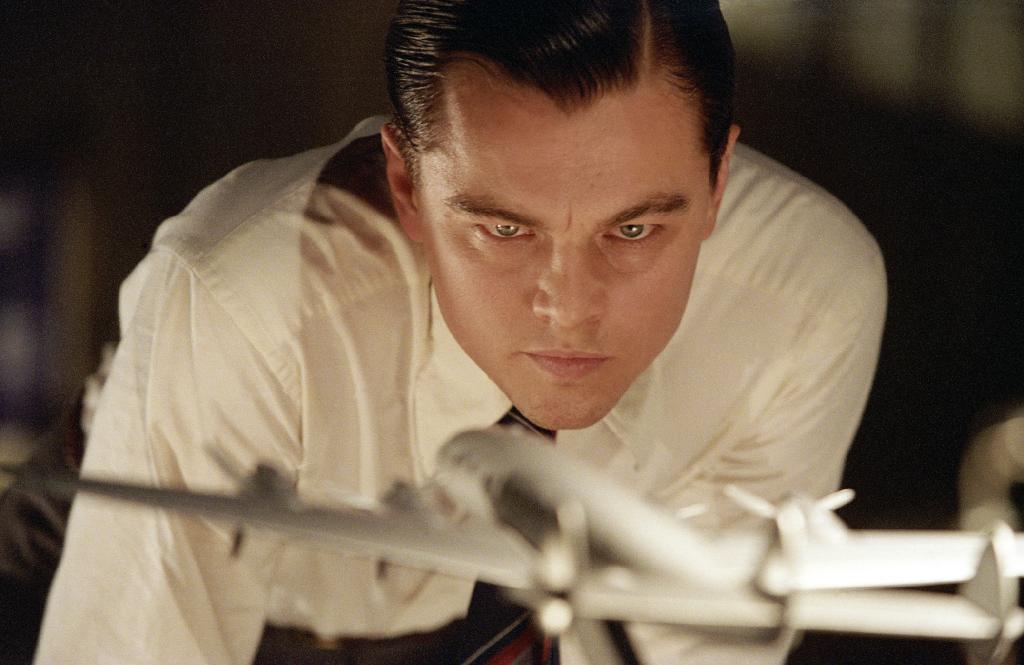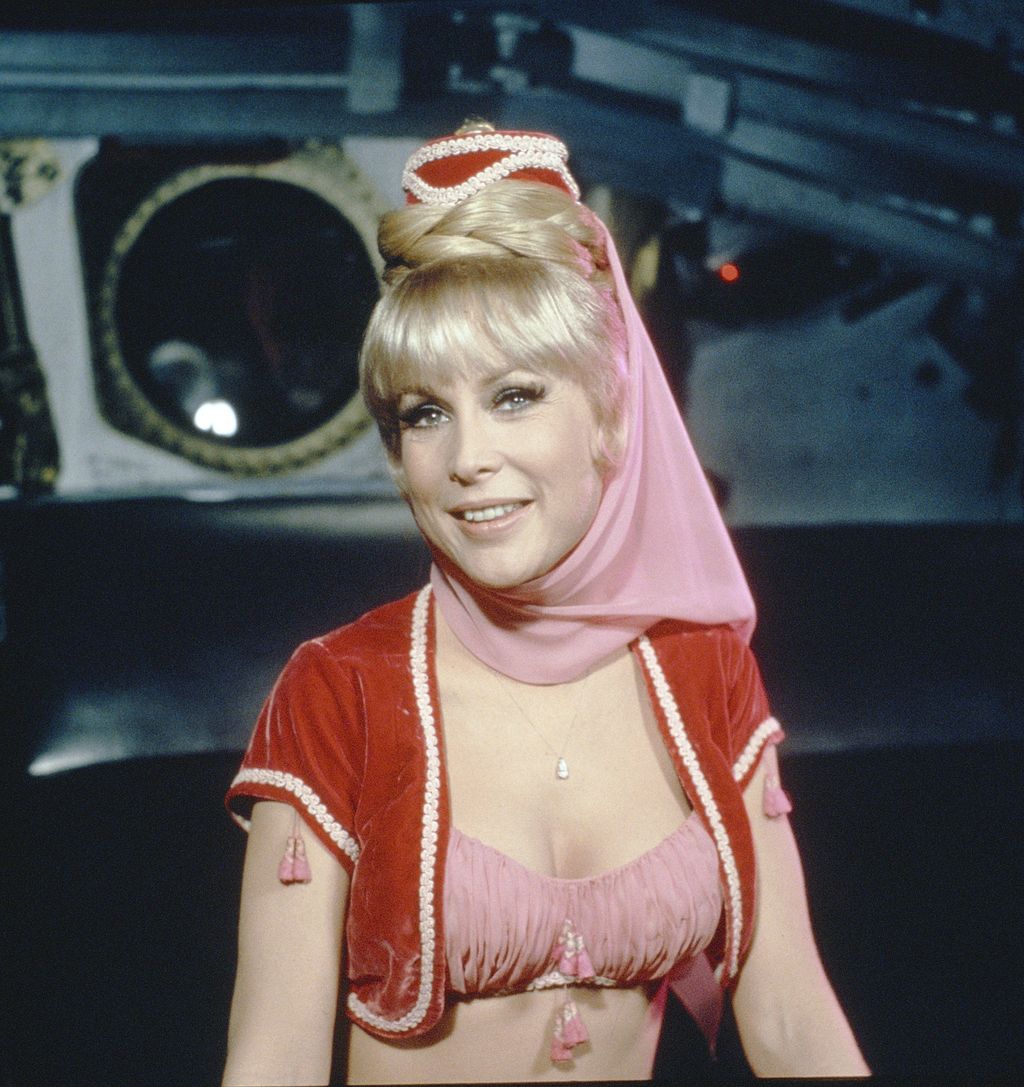
The landscape of American television in the mid-1960s underwent an enduring transformation with the debut of a captivating fantasy sitcom that transported viewers into a realm where wishes could materialize with a blink. “I Dream of Jeannie,” a series conceived by the imaginative mind of Sidney Sheldon, premiered on NBC on September 18, 1965, embarking on a five-season odyssey that would solidify its position in the annals of pop culture history. Starring Barbara Eden as the eponymous 2,000-year-old genie and Larry Hagman as the astronaut whom she serendipitously falls for, the show forged a narrative of magical mischief and human connection that deeply resonated with audiences. Its 139 episodes, produced by Screen Gems, provided a delightful respite, amalgamating humor with heartwarming moments of budding romance and the comical challenges of safeguarding a supernatural secret.
The genesis of this enchanting narrative unfolds dramatically in the pilot episode, “The Lady in the Bottle,” establishing the comedic dynamics that would characterize the series. Astronaut Captain Tony Nelson of the United States Air Force finds himself adrift near a deserted South Pacific island after his one-man capsule, Stardust One, deviates from its intended course. It is on this remote beach that fate, or perhaps magic, intervenes: a mysterious bottle rolls into his path. Upon rubbing it and removing the stopper, a puff of smoke emerges, revealing Jeannie, a beautiful, Persian-speaking female genie who, to Tony’s great surprise, greets him with a kiss.
Initially, language barriers hinder clear communication until Tony articulates a wish for Jeannie to speak English, which she promptly fulfills. Her first act, at his behest, is to “blink” a recovery helicopter into existence, rescuing Tony from his predicament. Grateful, Tony declares her free, but Jeannie, having spent 2,000 years in confinement and now enamored with her liberator, subtly re-enters her bottle, rolling it into his duffel bag to accompany him home. An early narrative thread involved Tony’s engagement to Melissa, the daughter of his commanding general, a romantic triangle that producer Sidney Sheldon astutely chose to abandon, resulting in Melissa’s disappearance from the storyline after the initial episodes.
As Jeannie integrates into Tony’s life, her devotion, often manifested through ill-timed or overzealous magical interventions, becomes the principal source of the duo’s comical predicaments. Tony’s life centers around the meticulous concealment of Jeannie’s existence and her extraordinary powers, an endeavor constantly imperiled by NASA’s resident psychiatrist and his commanding officer, Colonel Dr. Alfred Bellows. Dr. Bellows frequently witnesses Jeannie’s bizarre antics, often in the company of Tony and his best friend, Major Roger Healey, but his attempts to expose Tony’s purported eccentricities or a concealed secret invariably misfire. His superiors remain unpersuaded, leaving Bellows to exclaim, “He’s done it to me again!” in perpetual frustration.

The dynamic between Tony and his best friend, Roger Healey, also undergoes an interesting evolution throughout the series. For the initial 16 episodes, Roger remains blissfully unaware of Jeannie’s true nature, although their paths cross in Episode 12. His discovery of her genie status leads to a brief, comical period during which he steals her bottle, becoming her new master. Roger, portrayed as good-natured yet often driven by a desire for vain or selfish gains, occasionally harbors hopes of exploiting Jeannie’s powers but generally respects the unique relationship between Tony and Jeannie. Later seasons introduce a retcon, portraying Roger as having known about Jeannie from the very beginning, even having been present on Tony’s space flight.
Adding another layer of magical chaos to Tony’s life is Jeannie’s evil twin sister, also named “Jeannie,” as Barbara Eden’s character explains that all female genies share this name. Portrayed by Barbara Eden in a brunette wig, this scheming doppelgänger emerges as a recurring antagonist from the third season onward, relentlessly attempting to usurp Tony for herself and establish herself as his “master.” Her final attempt within the series, following Tony and Jeannie’s marriage, involves a convoluted ploy with a man played by Michael Ansara, Barbara Eden’s real-life husband at the time, adding layers of meta-humor. Another frequently employed plot device centers on Jeannie’s magical vulnerability, specifically her loss of powers when confined in a corked bottle, leading to the complication that the next person uncorking it becomes her new master.
A significant turning point in the series occurs early in the fifth season when Jeannie’s uncle Sully (Jackie Coogan) summons her to become queen of their native country, Basenji. Tony inadvertently offends Basenji’s national pride concerning their feud with neighboring Kasja, leading to a requirement that he marry Jeannie and avenge Basenji’s honor. After a series of misunderstandings and Sully’s machinations, Tony, exasperated, declares that he would not marry Jeannie even if she were “the last genie on earth.” This declaration prompts Jeannie to return to Basenji in despair, leading Tony to realize his profound love for her. He then flies to Basenji to win her back, and upon their return, introduces her as his fiancée, shifting the show’s core premise from hiding her existence to concealing her magical abilities from the public.
The success of “I Dream of Jeannie” was undeniably bolstered by its memorable cast, who brought the fantastical narrative to life with their compelling performances. Barbara Eden flawlessly embodied Jeannie, a beautiful, fiercely loyal, and immensely powerful yet perpetually mischief-prone genie from the fictional nation of Basenji. Her captivating portrayal cemented Jeannie as an icon. Larry Hagman skillfully navigated the role of Captain, later Major, Anthony “Tony” Nelson, the astronaut and U.S. Air Force officer whose discovery of Jeannie sets the entire saga in motion.
Product on Amazon: I Dream of Jeannie: The Complete Series DVD
Price: 39.4 USD
Rating: 4.4 Total reviews: 68
Top Review from US: “I loved this show and now I am seeing all the episodes I never got to see as a youngster! Like the first 12 in season 1, you see things differently as an adult, you get all of the innuendo, and by the way the hidden pregnant belly? They tried but failed. Great show Great price, loving how fast we got it.”
Shopping on Amazon >>
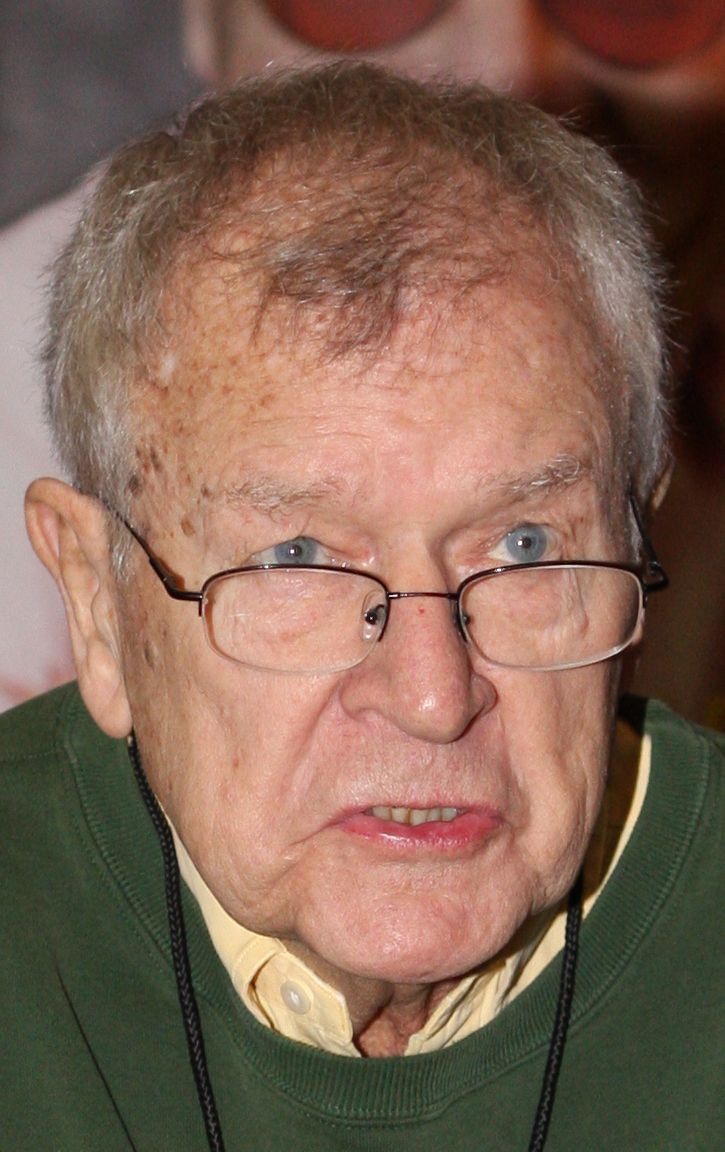
Complementing the central duo were Bill Daily as Captain, subsequently Major, Roger Healey, Tony’s affable best friend and fellow astronaut, who eventually became privy to Jeannie’s extraordinary secret. Hayden Rorke delivered a nuanced performance as Colonel Alfred Bellows, MD, the ever-suspicious psychiatrist and Tony’s superior, whose persistent but always foiled attempts to uncover Tony’s secrets provided much of the show’s comedic tension. Recurring cast members, including Barton MacLane as General Martin Peterson and Emmaline Henry as Amanda Bellows, further enriched the series’ ensemble, adding depth and comedic opportunities across its five seasons.
The creation of “I Dream of Jeannie” was, in part, a strategic response by Sidney Sheldon to the immense popularity of ABC’s “Bewitched,” which had debuted successfully in 1964. Sheldon, drawing inspiration from the 1964 film “The Brass Bottle,” envisioned a narrative centered around a beautiful female genie. Both “I Dream of Jeannie” and “Bewitched” were notable productions of Screen Gems. A pivotal challenge arose during casting for the role of Jeannie, as Sheldon had a very specific vision and a firm rule: he did not want a blonde genie, aiming to differentiate his character from “Bewitched’s” lead. However, after numerous unsuccessful auditions, he eventually called Barbara Eden’s agent, a fortuitous decision as Eden had coincidentally co-starred in “The Brass Bottle” as Sylvia Kenton, demonstrating her prior experience with such a concept.
The series launched on Saturday, September 18, 1965, at 8 p.m. on NBC, during a period when the network was transitioning much of its prime-time lineup to color. Intriguingly, “I Dream of Jeannie” was one of the two programs that initially remained in black and white, primarily to facilitate the special photographic effects required for its magical sequences. Sidney Sheldon himself desired to film the first season in color, but NBC and Screen Gems were hesitant to incur the additional expense, doubting the show’s longevity beyond a single season. Sheldon even offered to personally cover the extra $400 per episode needed for color filming, but Screen Gems executive Jerry Hyams famously advised him, “Sidney, don’t throw your money away.” By the second season, however, advancements in visual effects made color production feasible, aligning the show with the industry trend that saw all prime-time series in the United States shot in color by 1966.
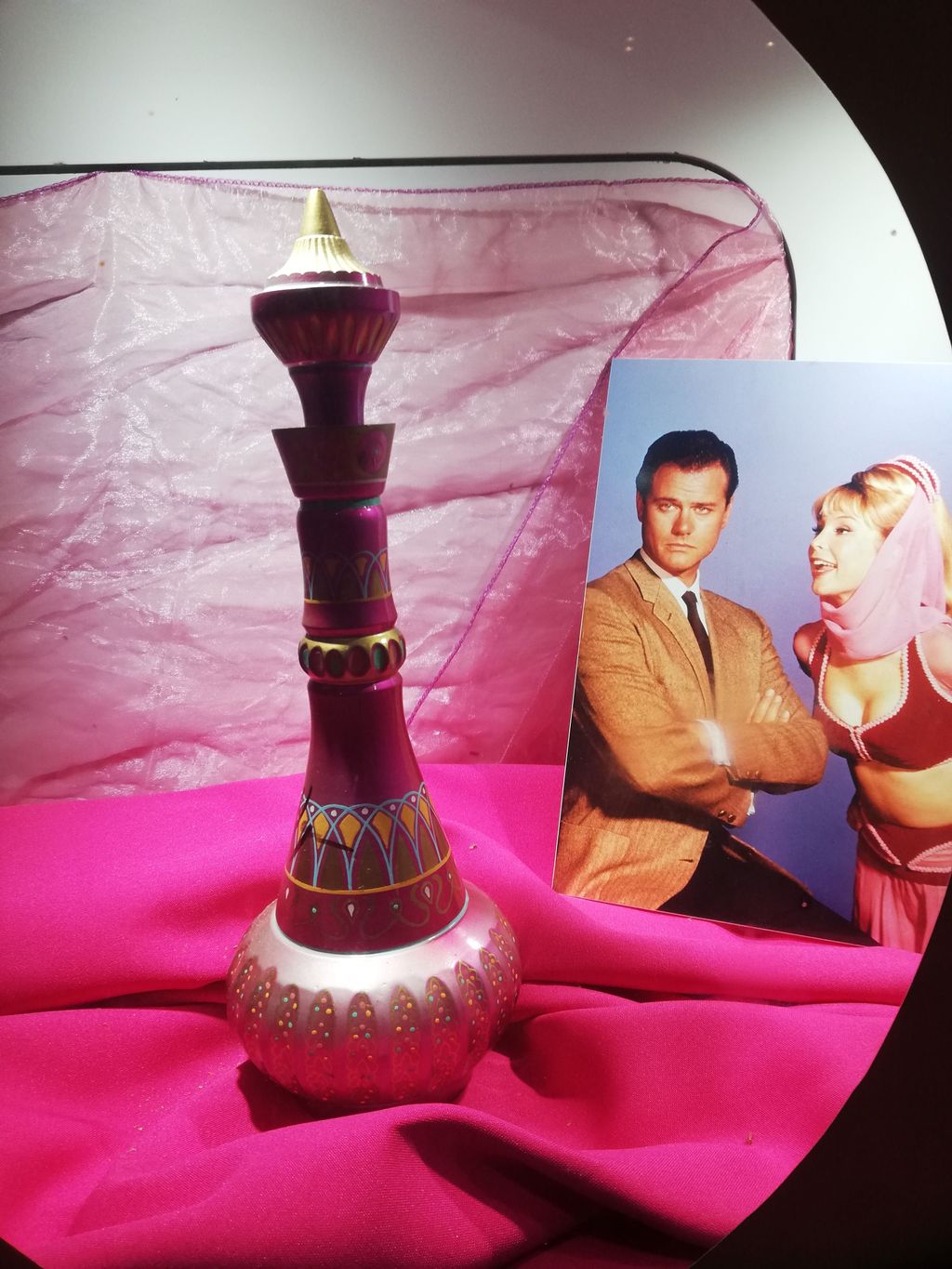
The visual identity of “I Dream of Jeannie” evolved significantly through its iconic opening sequences. The pilot’s immediate follow – up episodes, specifically episodes two through eight, featured a non – animated, expository opening narrated by Paul Frees, which established the setting as “a mythical town” named “Cocoa Beach” in “a mythical state called ‘Florida'”. The remainder of the first season introduced an animated sequence, which was subsequently redone and expanded for the second season. This revamped animation, utilized throughout seasons two to five, vividly depicted the initial meeting from the pilot, showing Captain Nelson’s space capsule splashing down, Jeannie gracefully emerging from her redesigned bottle, and sharing a kiss with Nelson before being drawn back into her mystical abode. Both original versions of the show’s animated opening sequence were masterfully crafted by the renowned animator Friz Freleng.
Despite being famously set in and around the real – life Cape Kennedy, Florida, with Major Nelson residing at 1020 Palm Drive in the fictionalized “Cocoa Beach”, the actual filming of “I Dream of Jeannie” primarily took place in California. The exterior of the building depicted as Nelson and Major Healey’s offices was, in reality, the main building at the NASA Flight Research Center, now known as the Armstrong Flight Research Center, located at Edwards Air Force Base, north of Los Angeles. As Bill Daily once quipped, “If you look at some of those old episodes, it’s supposed to be shot in Cocoa Beach, but in the background you have mountains—the Hollywood Hills,” revealing the geographic incongruity. Furthermore, the residence used as Major Nelson’s home was situated at the Warner Bros. Ranch in Burbank, on Blondie Street, a set that also famously served as the Anderson house in “Father Knows Best” and Mr. Wilson’s home in “Dennis the Menace”. Many exterior scenes were filmed at this facility, while interior filming was conducted at the Sunset Gower Studios, the original Columbia Pictures studio lot, in Hollywood.
The cast and crew did make two notable visits to Florida’s Space Coast during the show’s run, both in 1969, adding a touch of authenticity to the setting. On June 27, 1969, a celebratory parade in Cocoa Beach escorted Barbara Eden and the cast to City Hall, where she was warmly received by fans and local officials. They then proceeded to LC – 43 at Cape Canaveral, where Eden had the unique honor of pressing a button to launch a Loki – Dart weather rocket. Their visit continued with dinner at Bernard’s Surf, where Eden was presented with the State of Florida’s Commodore Award for outstanding acting. Later, at Lee Caron’s Carnival Club, Eden received gifts and notably kissed astronaut Buzz Aldrin on the cheek, just two weeks before the historic Apollo 11 launch. The cast and crew returned for three days on November 25, 1969, for a mock wedding ceremony between Eden and Hagman, staged for national television writers at the Patrick Air Force Base Officers Club, timed to coincide with the airing of the nuptials episode on December 2. Then – Florida Governor Claude R. Kirk, Jr., even attended and cut the cake for the “couple”. Years later, in July 1996, Barbara Eden returned as a featured speaker for Space Days at the Kennedy Space Center, where Cocoa Beach Mayor Joe Morgan honored her with an “I Dream of Jeannie Lane” street sign, which was later installed off Florida State Road A1A. The area further celebrated the show with a “We Dream of Jeannie” festival in 2005, featuring a Jeannie look – alike contest, an event previously interrupted by hurricanes in 2004 but still held with Bill Daily’s attendance. On August 24, 2012, Cocoa Beach City leaders permanently honored the show with a roadside plaque outside Lori Wilson Park.
Jeannie’s mysterious origins underwent a significant narrative revision during the show’s run, illustrating the fluid nature of character backstories in television production. In the first season, the audience was led to believe that Jeannie was originally a mortal human, transformed into a genie by “The Blue Djinn”, and that her family were simply “peasants from the old country”. This initial concept was briefly revisited in the second – season episode “How to be a Genie in 10 Easy Lessons”, though without a clear resolution regarding her exact origin. However, the third season introduced a significant “retcon” or retroactive continuity change. Dialogue in this season implied that Jeannie had always been a genie. This revised narrative firmly established all her relatives as genies, including her mother, who was also portrayed by Barbara Eden beginning in Season 4, Episode 2, “Jeannie and the Wild Pipchicks”. This new, consistent narrative concerning her magical heritage was maintained for the remainder of the series, simplifying her backstory for future plotlines.

The captivating soundscape of “I Dream of Jeannie” is inextricably linked to its memorable theme music, which itself underwent a notable transformation early in the show’s history. The first season featured an instrumental jazz waltz composed by Richard Wess, but Sidney Sheldon, the show’s creator and producer, expressed dissatisfaction with both Wess’s theme and his overall musical score. Consequently, from the second season onwards, a new theme titled “Jeannie” took its place, composed by Hugo Montenegro with lyrics by Buddy Kaye—though the lyrics were never actually used in the show itself. Interestingly, songwriters Gerry Goffin and Carole King had also penned a theme, also titled “Jeannie,” for Sheldon before the series began, but it was ultimately not selected. Later in the series, specifically during the third and fourth seasons, another instrumental theme by Hugo Montenegro, simply titled “Mischief,” was introduced. This playful tune, characterized by the accompaniment of a sideshow organ, trombone, and electric bass, became a signature sound for the show’s more campy or outdoor scenes, often heard during moments like Jeannie learning to drive or reactions to Doctor Bellows’ antics, first appearing in the season 3 premiere, “Fly Me to the Moon.” The popularity of the “Jeannie” theme extended beyond the show, with a popular cover version released in 1985 on the compilation “Television’s Greatest Hits: 65 TV Themes! From the 50s and 60s” by TVT Records. This recording was notably sampled in several songs, including DJ Jazzy Jeff and the Fresh Prince’s 1987 debut single “Girls Ain’t Nothing but Trouble” and for the 1990 re – release of Dimples D.’s “Sucker DJ.” Furthermore, a unique mashup called “Jeannie’s Diner” by Mark Jonathan Davis, combining the Montenegro theme with DNA featuring Suzanne Vega’s “Tom’s Diner,” was featured on the “Tom’s Album” compilation in 1991 and later used by Nick at Nite for its “I Dream of Jeannie” rerun promos, showcasing the theme’s enduring cultural resonance.
Perhaps no prop in television history is as emblematic of a show as Jeannie’s iconic bottle, a distinctive element that captivated audiences and became synonymous with the series. Remarkably, this famous bottle was not custom – designed for the show; it was, in fact, a special Christmas 1964 Jim Beam liquor decanter, originally containing “Beam’s Choice” bourbon whiskey, designed by Roy Kramer for the Wheaton Bottle Company. While Sidney Sheldon was long believed to have received one as a gift and recognized its potential, strong evidence suggests that first – season director Gene Nelson discovered one in a liquor store, purchased it, and brought it to Sheldon. Several individuals in the Screen Gems art department also claimed credit for finding the bottle, highlighting its unique discovery.
The bottle’s appearance itself transformed with the show’s transition from black and white to color. During the first season, filmed in monochrome, the bottle was a dark, smoke – green color, adorned with a painted gold – leaf pattern to simulate an antique appearance. The plot description for the pilot in TV Guide even referred to it as a “green bottle,” and its initial appearance on screen was intentionally rough and weathered. When the series switched to color, the show’s art director reimagined the bottle in vibrant purples and pinks, creating the more widely recognized colorful design. Later colorized versions of the first season attempted to replicate this purple hue, adjusting the original smoked glass look to match the later seasons’ aesthetic.
Even the bottle’s stopper has its own backstory. The first – season bottle utilized a clear glass stopper that Tony famously salvaged from a 1956 Old Grand – Dad Bourbon bottle, as the original stopper was inadvertently left behind on the South Pacific beach. However, in the inaugural color episode, Jeannie retrieves her original stopper from the beach, and it, painted to match the bottle, is used for the remainder of the series and subsequent films. Close – up shots of the stopper occasionally reveal the plastic rings designed to secure the cork part in place. The magical smoke effect emanating from the bottle also evolved; early black and white episodes typically employed a screen overlay of billowing smoke, sometimes combined with animation. Later color episodes initially used purely animated smoke, before transitioning to a more practical effect involving a live smoke pack lifted from the bottle via a wire.
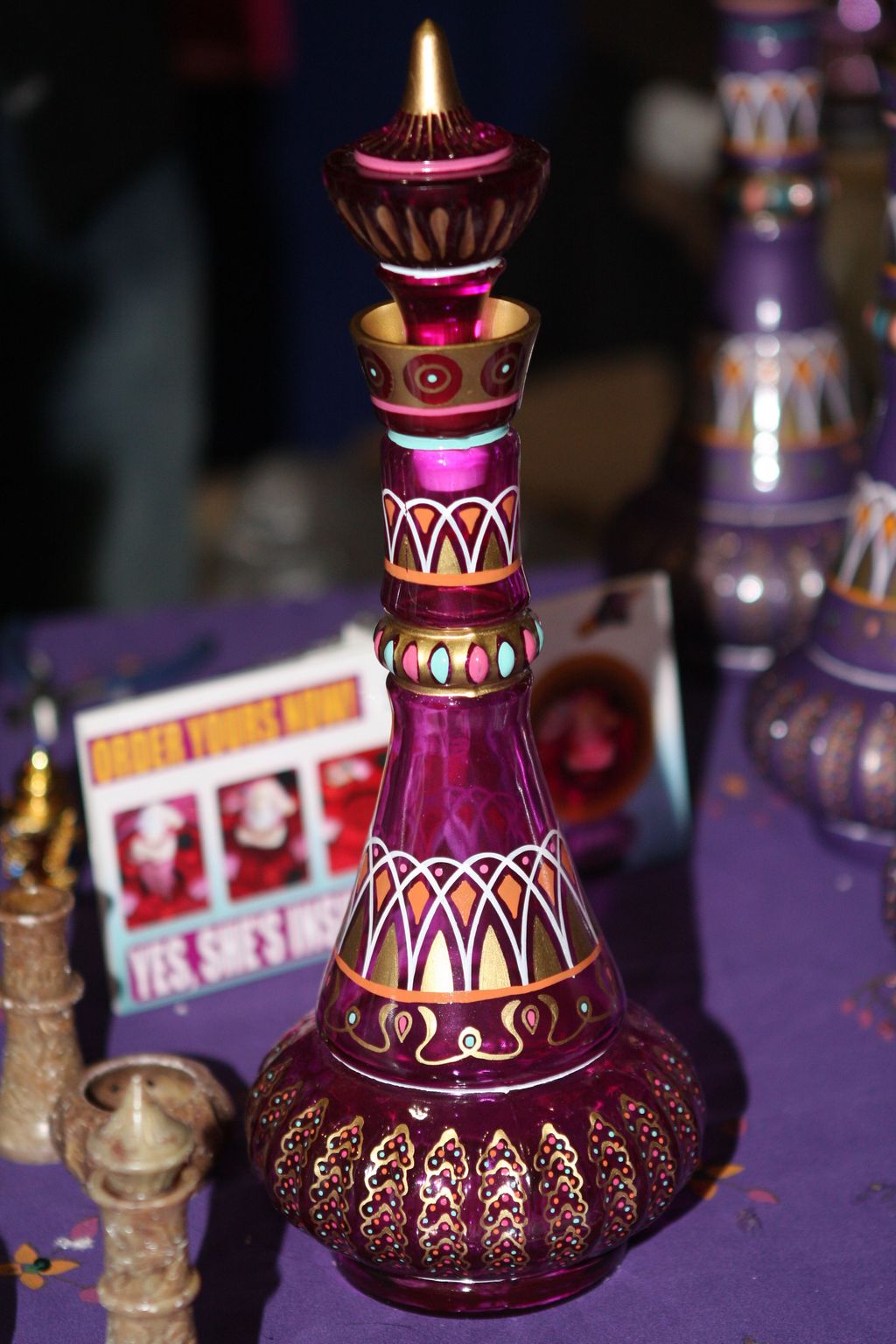
The exact number of Jeannie bottles used throughout the production remains unknown, though crew members have estimated that around 12 were painted and utilized. The stunt bottle, crucial for the smoke effects, was frequently damaged due to the heat and chemicals involved in generating Jeannie’s magical plumes. Multiple bottles were employed for the pilot’s opening scene on the beach, including one drilled for smoke and another designed to roll across the sand into Tony’s duffel bag. Two bottles were also used for promotional tours prior to the first season’s launch, with one designated for the first season’s production. Notably, Barbara Eden received the color stunt bottle used on the final day of filming the series’ last episode, a gift from her make – up woman after the show’s cancellation. According to DVD releases and talk – show appearances, Bill Daily and Larry Hagman also each came to possess an original bottle, securing tangible pieces of television history. In a meta – narrative twist, the third – to – last episode, “Hurricane Jeannie,” depicts Nelson dreaming of Dr. Bellows discovering Jeannie’s secret, culminating in the bottle being shown broken on camera—an intended series finale often aired as such in syndication.
“I Dream of Jeannie” cleverly incorporated multi – part story arcs, often linked to national contests designed to boost viewer engagement. During the second season, a two – part episode and two peripheral episodes revolved around Jeannie’s unknown birthday. Her family members couldn’t agree on the date, prompting Tony and Roger to use NASA’s new computer for horoscopic guidance. While the year 64 BC was quickly established, Roger playfully withheld the exact date, making it the basis of the “Guess Jeannie’s Birthday” contest, which began on November 14, 1966. Jeannie finally extracted the exact date—April 1—from him at the end of the fourth episode, which was revealed on December 5. A third – season four – part episode, “Genie, Genie, Who’s Got the Genie?”, spanning January 16 to February 6, 1968, presented a perilous scenario where Jeannie was trapped in an explosive – rigged safe bound for the Moon. A contest was held to guess the safe’s combination, which was not decided until just before the episode aired and was dubbed into Larry Hagman’s dialogue. Barbara Eden herself announced the winning combination, 4 – 9 – 7, over the closing credits, creating an interactive viewing experience. The fourth season featured “The Case of My Vanishing Master,” a two – part episode (January 6–13, 1969) where Tony was secretly replaced by a double. This prompted another contest to guess Tony’s secret location, with the answer, Puerto Rico, revealed by Jeannie and Tony in a special epilogue to “Invisible House For Sale” (February 3, 1969), along with the “Grand Prize Winner.”
While “I Dream of Jeannie” may not have consistently topped the Nielsen ratings during its original run, it achieved its highest ranking of 26th during its fourth season, demonstrating solid viewership. Its true enduring popularity became evident in syndication, where reruns often outperformed network competition. When the series debuted in reruns on New York’s WPIX, it notably won its time period with a significant 13 rating and a 23 share of the audience. Similarly, in Washington, D.C., WTTG saw the series average a 14 rating and a 32 share, proving its off – network appeal. This success marked a historic moment, as it was “the first time in rating history that indies (local stations) have knocked over the network stations in a primetime slot,” a phenomenon spurred by WPIX’s back – to – back Jeannie reruns from 7 to 8 p.m. Today, the series continues to air on Antenna TV, and it has found international audiences, including being dubbed in Hindi for India’s Sony Entertainment Television and Zee Cafe, in Italian for Rai 1 (under the name “Strega per amore”), and in French for TF1.
The persistent demand for “I Dream of Jeannie” has led to numerous home media releases, allowing generations of fans to revisit Major Nelson and Jeannie’s magical escapades. Sony Pictures Home Entertainment initially released all five seasons on DVD across various regions, both as individual season sets and comprehensive complete series box sets. Notably, the first season was available in both its original black – and – white format and a colorized edition, with only the colorized version included in Sony’s complete series collections. In 2013, Mill Creek Entertainment acquired the Region 1 rights, re – releasing the first two seasons on DVD in 2014, but only in their original black – and – white format, as they did not hold the rights to Sony’s colorized versions. Mill Creek later re – released “I Dream of Jeannie: The Complete Series” on DVD in 2015, although it omitted some special features from the Sony releases. A highly anticipated Blu – ray release of the entire series by Mill Creek Entertainment occurred on November 30, 2021, after several delays. However, this release garnered widespread consumer and reviewer complaints, as it appeared to be an upscaled standard – definition master rather than true remastered HD, despite actual HD prints existing in Sony’s vaults for online streaming. Australia also saw repackaged complete series collections, including a 50th – anniversary edition in 2015, and further re – releases through Shock Entertainment in 2016. The series was also distributed on VHS, with various collections grouping episodes by themes, such as “Waiter, There’s a Girl in My Bottle” or “Magical Mischief,” offering different ways for fans to enjoy the classic episodes.
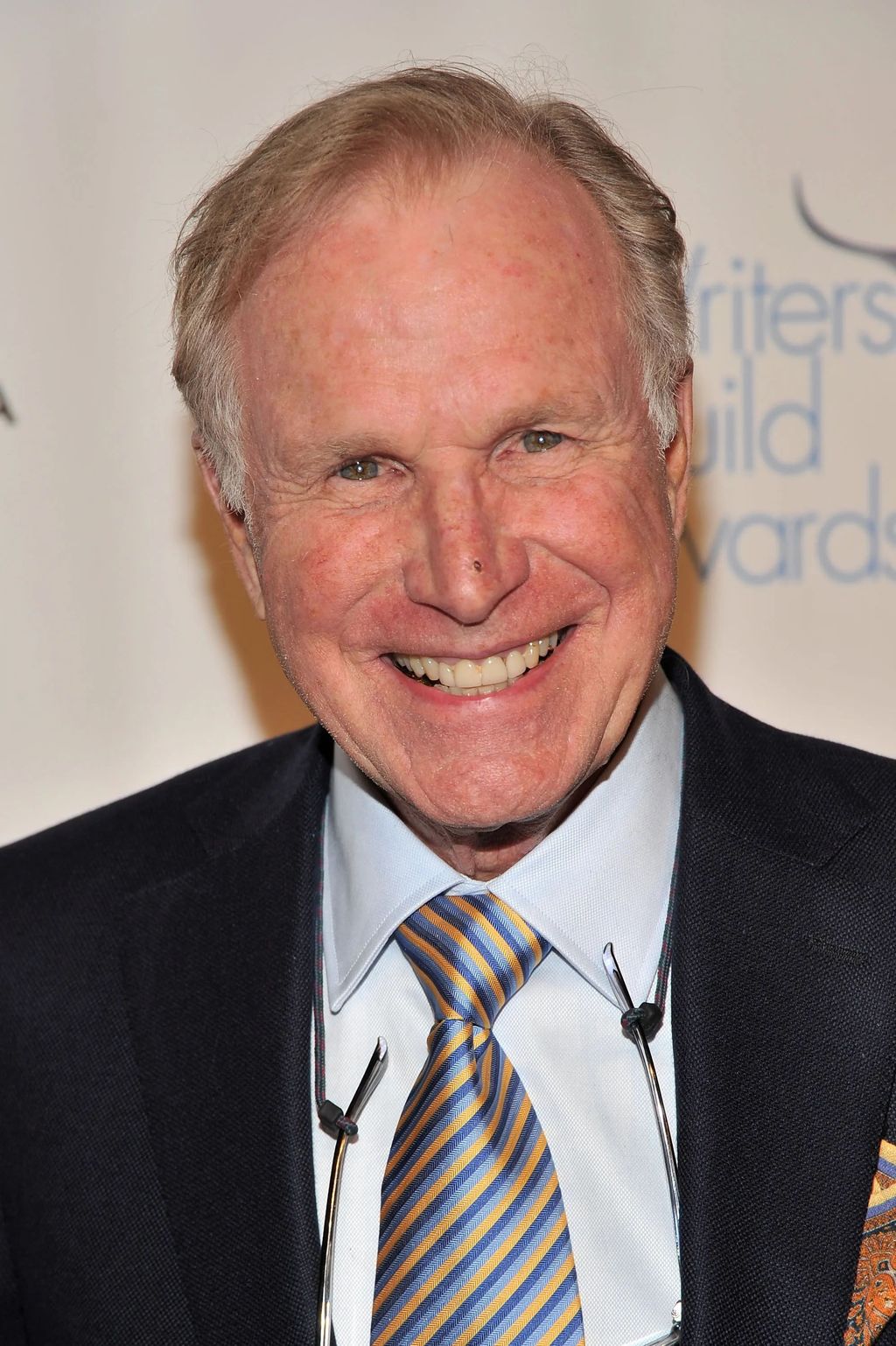
The world of “I Dream of Jeannie” extended beyond its original television run, maintaining a vibrant cultural presence through various other media adaptations and spin – offs. Barbara Eden reprised her iconic role in two made – for – television reunion films, “I Dream of Jeannie… Fifteen Years Later” (1985) and “I Still Dream of Jeannie” (1991), though Larry Hagman notably did not return as Tony Nelson in either of them, with Wayne Rogers and Ken Kercheval filling substitute roles for Jeannie’s master. Bill Daily, however, did return as Roger Healey for both films, and Hayden Rorke made a brief appearance in the first one. A third film was planned but never materialized. The series also ventured into the realm of comic books, with Dell Comics publishing two issues in 1966, and Airwave reviving the comic series with three stand – alone issues in 2001 – 2002. Fans could also engage with the franchise through a Milton Bradley Company tie – in board game released in 1965, a series of “I Dream of Jeannie” video games released by Trendmasters for Microsoft Windows in 1995 and 1996, and even a slot machine game introduced in 2015. Hanna – Barbera Productions further expanded the universe with an animated series, “Jeannie,” which aired from September 1973 to 1975, featuring Julie McWhirter as Jeannie and Joe Besser as genie – in – training Babu, serving high – school student and surfer Corey Anders, voiced by Mark Hamill.
Decades after its final broadcast, “I Dream of Jeannie” continues to conjure a unique brand of enchantment, a testament to its innovative premise, captivating performances, and the sheer delight it brought to millions. From its pioneering special effects to its clever narrative contrivances, the series crafted a timeless fantasy that transcends its era. It is a show that dared to imagine the extraordinary in the everyday, where the blink of an eye could transform the mundane into the magical, and where love, even across millennia and magical realms, could find its way. The sitcom remains a cherished fixture in popular culture; its iconic bottle is a symbol of wishes granted and secrets kept, forever reminding us of the enduring power of a television classic that continues to make us dream.


